
When, on October 5, 2003, the Barrington United Methodist Church congregation dedicated its new place of worship and community fellowship at Algonquin Road and Highway 59, it embraced the soil close to where its founding members had first gathered in their log cabins in 1840.
And in 1840, intersecting trails forged by Indigenous Americans between their inland camps and the Fox River were the routes by which the pioneers reached their new homesteads. They are the roads we travel today. In your mind’s eye, as you drive between Dundee and Algonquin along their namesake roads, join those early wagon trains, for among them also were courageous and dedicated men—the circuit riders—carrying the Methodist faith to the growing tide of settlers.
The circuit riders had first crossed the Alleghenies in the late 18th century with the pioneers. By the mid-19th century their Conferences and Circuits were well connected throughout the new territories including Illinois.
Since 1834, families, mostly from New England states, had established their claims in the vicinity of those Dundee and Algonquin trails, awaiting the opening of the land sale offices in 1838. A few settlers had traveled down the Fox River to come ashore at the Dundee settlement and follow the trails inland.
Timber was plentiful to build their cabins, fish and game teemed in the streams and lakes, and as they broke the prairie, crops were grown in the fertile soil. They met at first for worship in their log cabins, joining their neighbors in weekly meetings conducted by a lay leader.
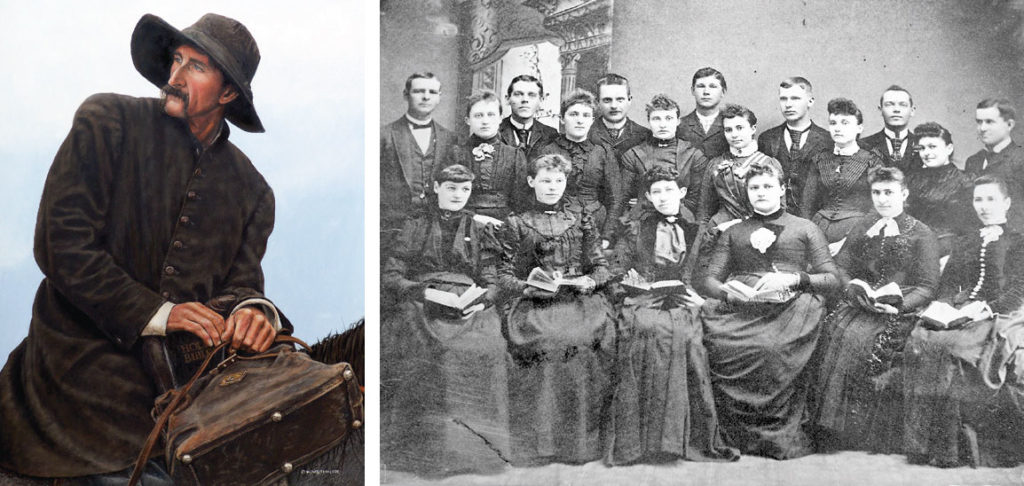
By 1840, there were approximately 400 settlers in the precinct they called Barrington. That year, government law required that land be set aside in each precinct for schools and elections held for school boards, the first form of government in the newly settled territories. Once Illinois townships of 36-square miles were designated starting in 1848, “Section 16” on the township’s grid was for schools to be built upon, or for land sales to finance schools.
In 1840 too, an organized Methodist Group or Class of Six was established in the area. The Class Leader was John Allen, the Steward was Philip Gould; the other members were Mrs. Allen, Mrs. Gould, Mrs. Alvah Miller, and her son E.N. Miller.
Growing to a Class of 18, they now moved to a schoolhouse where a Circuit preacher rode to conduct services once a month. Records of the Methodist’s Rock River Conference are clear that this was Miller’s Grove or Barrington Center School on the Dundee Road. However, the Barrington Methodists own history refers to a stone schoolhouse at (now) Bateman and Algonquin Roads, the location of the Jackson School.
According to the Rock River Conference history, one of the Dundee Circuit leaders was the Reverend Nathan Jewett, likely that dedicated Circuit preacher who, in 1844, became their first pastor. In 1844, Reverend Jewett also organized a Class of the Methodist Episcopal Church in Cuba Township, meeting in the White School house.
In 1850, the Sheriff called for the formal naming of the township. An 1851 map indicated a population of 672 in the Township. They were mostly from the East Coast, a few from Canada. In 1853, Sinas Bolles of the Dundee Circuit dedicated the Barrington Center North Church at Dundee and Sutton Roads. The church was described as, “A plain, neat frame edifice, 34’ x 52’ with a short steeple and a bell.” It was soon the strongest church in the Dundee Circuit with a membership of 85. It stands today, a reminder of those intrepid pioneers and the faith that strengthened them in the wilderness.
The settlers around Barrington Center would soon receive momentous news. To the east in 1854, the Chicago and Northwestern Railway was laying tracks northwestward. At the Lake-Cook County line having purchased 40 acres, the railroad initially platted out and sold the lots that founded the town of Barrington Station.
This new town with its business opportunities soon began drawing families from Barrington Center and it was clear that a church was needed in the new community. But funds were scarce. However, a lot was purchased at the corner of Ela and Franklin Streets. The Reverend Jewett agreed to join his Cuba Methodist Episcopal Class into the new church.
Construction began in 1858, and the simple white frame colonial style church with a bell tower and a steeple was completed in 1859. Seating about 125 people, it cost $2,000. In 1861, the church commissioned a bell from England. It was cast in Sheffield at the firm of Naylor, Vicker & Company and would ring out across the downtown village for the next 137 years.
By 1863, the village population had reached 300, the minimum number for incorporation. An election was held on November 18, 1863, in the railway depot; 29 voted for and four against Incorporation. The Civil War then dominated national life and state business transactions were slow. The Charter, under the Private Laws of the State of Illinois, was finally granted on February 15, 1865.
As the village grew, so did the Methodist Church membership, which by 1871 numbered 84 with 6 probationers. Meanwhile the Barrington Center membership had dropped to eight. For several years the same preacher conducted morning services in the village church and then rode out to “the Center,” as the old timers referred to it, to conduct a service there.
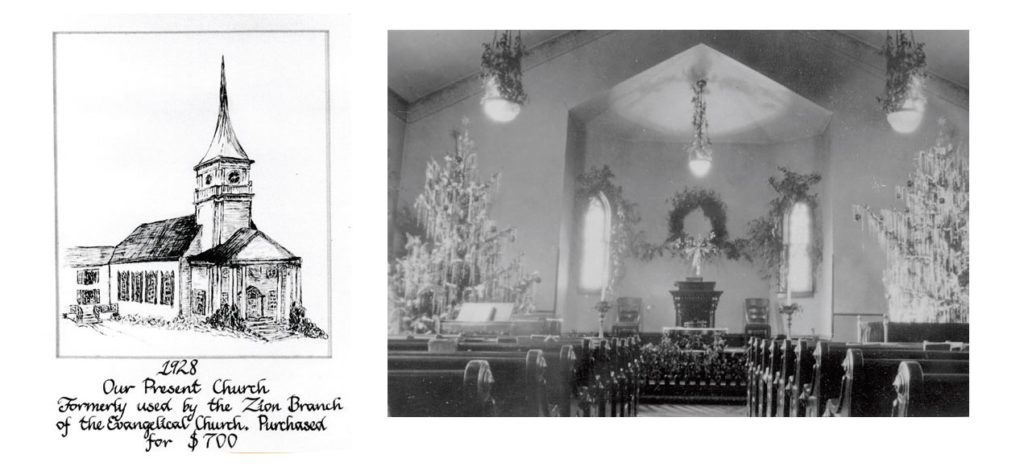
A larger church was needed and having decided on a location on South Cook Street, the Ladies of the Church were instrumental in fundraising to purchase the Lot. They were helped by sale of the Franklin Street church to the Catholic community for $550 to become the first Saint Anne Church.
The new church on South Cook Street was dedicated on December 22, 1872, with great ceremony. For the standards of the time, it was a beautiful church, a white frame building, with two spires. There was stained glass in the Gothic windows, and the bell was brought from the Franklin Street church and carefully hung. The furnishings, including a $500 organ, cost about $4,000.
It was here the Methodists could worship, but also offer a center for community activities and fellowship. The downstairs meeting hall was in great demand for temperance meetings, literary societies, the Grand Army of the Republic’s meetings, lectures and concerts, and a youth social center, which joined the Epworth League, a nationwide membership of youth services founded in 1889 at Cleveland’s Central Methodist Church.
In the latter years of the 19th century, the church became the core of home and community life. It served the spiritual, social, and charitable needs of the community, along with other faith denominations. Mission activities extended into poorer neighborhoods of the city, and the Ladies Aid Society knitted and sewed to supply the volunteers with goods for those less well-off.
Through 50 years the church had been well used, and as the century turned, modern improvements were made. The auditorium was enlarged as the groups and their members grew in number. A steeple had been hit by lightning and Barrington’s master builder, Fred Lines, was called in to lower the steeple.
In 1925, a young preacher, the Reverend H.L. Buthman, was assigned to the church and he was enthusiastic about plans that were then being formulated for a new church. A pleasant, outgoing young man, he quickly endeared himself to the community and was affectionately known as “Boots.” Funds needed were projected at $60,000 and Boots took an active part in obtaining pledges.
Mrs. Velva Welsh, the Church historian from 1960-1975, eloquently tells what happened next: “All was going according to plan—the pledges were coming, details were being worked out—when unforeseen and unfortunate circumstances occurred. The 1929 Great Depression hit, and a bank closed, and Reverend Buthman was dying at the age of 36. It is difficult to put into words the desperation and panic of those times.”
John Bell, the designer of Jewel Park, visited Boots in the hospital, whose main worry was building the new church. It came about, but not quite as originally planned. The committee decided to go ahead and promised Boots it would be done. Opportunely the vacated Zion Evangelical Church, which faced Lincoln Street, was for sale at $700. Built in 1880, the church was examined by Robert Work, an esteemed Chicago architect, who also lived in Barrington. He found it sound, with heavy oak timbers and pegged construction. The lines were good, and he designed a remodeling in the colonial style.
The church was lifted and turned onto a new foundation facing Hough Street. Such moves were quite usual; the firm Scharf and Sons had relocated dozens of buildings in Barrington. By adding new window frames, windows, columns, carpets, the old building was completely refurbished. Once more, the bell was moved into a new steeple, tall across the Barrington skyline.
The church on Hough Street was dedicated on January 25, 1931. The occasion was touched with sadness as tribute was paid to the “gallant” Reverend Buthman. However, the church members enjoyed a sense of pride and achievement as their numbers increased and could be found serving in all aspects of community life.
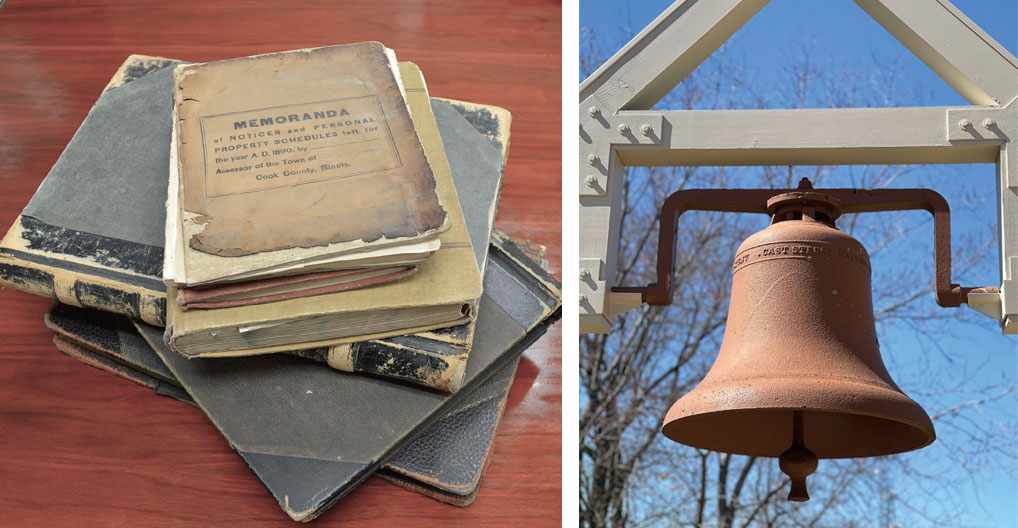
As in the previous churches, membership steadily grew and by 1940 the Sunday School had an enrollment of over 200 children. That was the year too, the Centennial of the Church was celebrated in a week-long series of events. The Church’s charitable and mission services went way beyond the Barrington area, supported in part by the success of the Rummage Sale, begun during the Depression, as an exchange of needed goods and food between church families. (See sidebar.)
In 1952, plans were again underway for expansion, and an educational wing was added to the north. The Sunday School’s Sawyer Room was removed to build a new balcony for more seating in the Sanctuary. A dedication was held in 1957. The Parsonage next to the Church was moved to West Russell Street, and Robert Work was again at the drawing board, this time for the south education wing and a new chapel that was dedicated in 1960.
In 1968, the Methodist Church united with the Evangelical United Brethren Church to form a new denomination. Since then, this is the Barrington United Methodist Church; prospering, serving all manner of people far and wide, and known as the place where ideas to benefit the community were incubated.
This writer, in her first year in Barrington, was given some friendly advice: “If you want to know where business is done in Barrington, go to the steps of the Methodist Church on Sunday morning! But it went far deeper than that. The Hough Street Church, as its story was drawing to an unforeseen close, was known as “The Church in the Heart of the Community with the Community at Heart.”
On October 28, 1998, all the heart, resilience, and faith of their pioneer forebears was needed as congregation members and Barrington neighbors watched flames and smoke from the burning church fill the heart of the community. In its long fall from the burning steeple, the iconic bell was irrevocably cracked. However, most leather-bound volumes of original church records from Barrington Center were salvaged.
What follows is taken from the Church’s 175th Anniversary Commemoration:
“2003–After years of prayer, decision-making, and fundraising, our current building was dedicated on October 5, 2003. The hopes and dreams of our ancestors have come full circle in this space, literally just down the road from our beginnings. Today our congregation is thriving and growing with three worship services, faith development for all ages, fellowship, and service opportunities. We are reminded of our history by the bell which now hangs in our Columbarium Garden as it has moved with our congregation through the ages from the Barrington Church in the 1860s, to the other village sites, and finally to this place having been saved from the fire. Our steeple shines brightly as a symbol of our faithfulness to respond to God’s calling in our community for 175 years and into the future.”
Not the Circuit riders, but from far and wide church members and visitors make their way towards that gleaming spire on Algonquin Road. They can come from Mount Prospect and Huntley, from Wayne and Volo, and many points in between to join the congregation from the communities of the Barrington area, and continue the tradition of faith, service, and fellowship for the betterment of countless lives.
I want to offer our sincere thanks to Mrs. Sam Oliver and members of the BUMC staff for giving us access to their archives and memorabilia. It is a priceless collection of Church and community history. –Barbara L. Benson
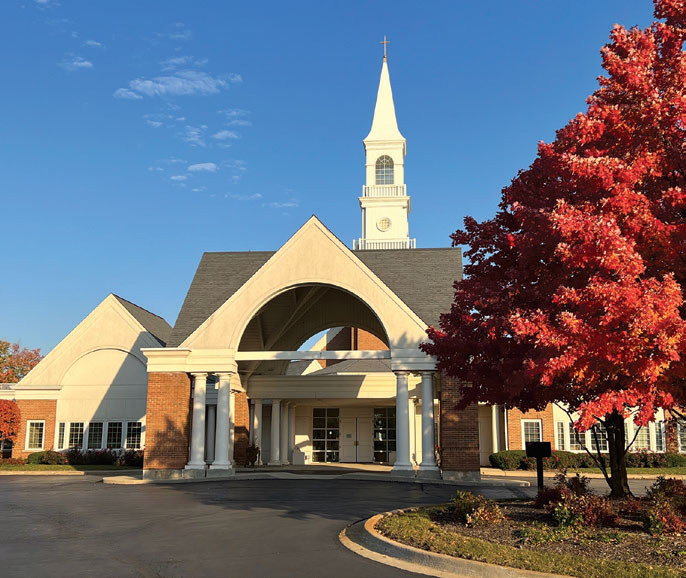
Begun in 1932, neighbor-to-neighbor amid the Great Depression, a local activity in times of need evolved into one of the most anticipated events on Barrington’s annual community calendar.
Starting out as a trade between families, it turned into a rummage sale that offered others the opportunity to buy needed items at affordable prices. One of the first sales in 1932 saw a profit of $11.67. By 1940, there were two sales a year, spring and fall, netting $200 to $500 per sale.
These proceeds provided the church with funds to support their mission work, a means for helping needy families. The Women’s Aid Society led the efforts, but today, United Women in Faith’s preparation for the sale and the sale itself often involves entire families in the five-day effort.
Decade by decade the sales grew both in scope and proceeds. People started to take the train from Chicago after reading of the quality and value to be found in all departments of the sale. A newspaper article featured items from the Specialty Shop, including porch furniture and an antique bed.
There is a dedication to this sale. When fire destroyed the Hough Street Church, two days before the 1998 sale, the Knights of Columbus offered their building on Kelsey Road. Instead of five days, the sorrowful but determined volunteers prepared the sale in two days instead of five. The sale remained at the Knights of Columbus venue until it could begin again, in 2004 in the new church.
Neighbors helping neighbors was the cornerstone of life in those pioneer days of the 19th century. It is a core value of the Methodist tradition that continues to this day.
The 2024 Rummage Sale will be held on Friday, October 4, and Saturday, October 5 at the church on Algonquin Road. This is the event’s 90th anniversary!
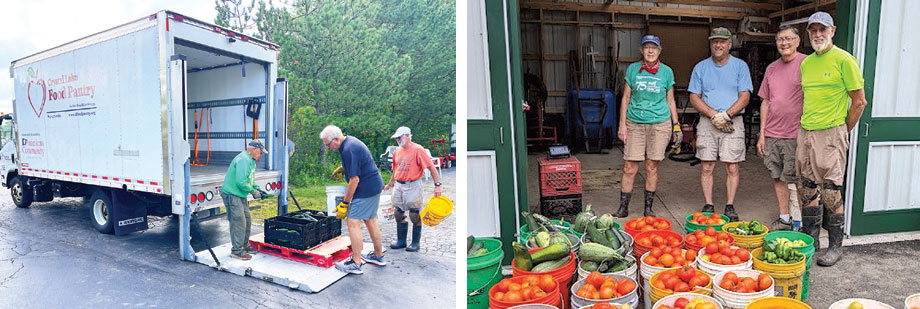
Once the church was established in the Barrington community, serving the needs of others was an accepted part of church membership. In the 19th century, orphanages, settlement houses, hospitals, and local nursing homes were among the recipients of necessities and personal welfare oversight.
The Ladies Aid Society, the Women’s Foreign Missionary Society, United Methodist Women, and now United Women in Faith have led programs.. Today over 24 missions, food pantries, youth programs, and senior support services benefit from Barrington United Methodist Church and the dedication of its members and volunteers.
Beyond our borders, weekly, team members staff USO centers at O’Hare International Airport to assist traveling service members and their families with phone calls, meals, personal needs, and travel arrangements. Among overseas recipients of support is the Mujila Falls Agricultural Research Station in Kanyama, Zambia. Last year, the Congregational Garden on 1.8 acres of church grounds, with more than 4,000 plants, provided over 22,500 lbs. of produce to nine area food pantries.
Besides worship, the BUMC offers many ways to share time and talents for the well-being of the greater community.
Share this Story